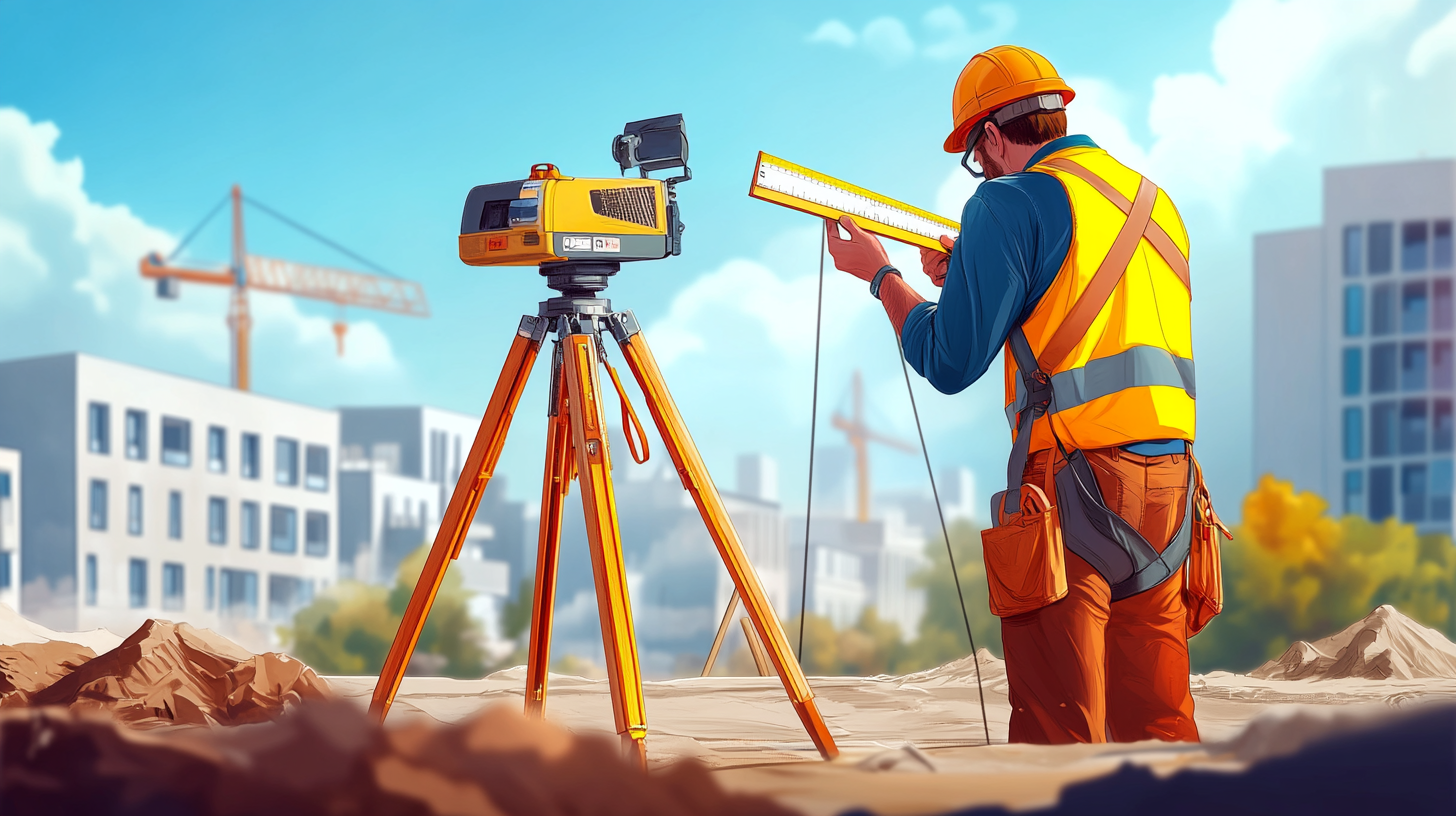
Dumpy Level Explained: Step-by-Step Setup, Survey Methods & Applications in Construction
Surveying tools are essential for achieving accuracy in construction. They lay the groundwork—literally—for everything from roads to high-rise buildings. Among these tools, the dumpy level has stood the test of time. Even with modern digital alternatives available, it remains a go-to instrument on construction sites thanks to its reliability, ease of use, and affordability.
This blog post will guide you through everything you need to know about the dumpy level, including what it is, how to set it up, and the best practices for using it on-site. We’ll also explore its applications in construction and compare it with other leveling instruments.
What Is a Dumpy Level?
The dumpy level, invented in the early 19th century, is a manual optical surveying instrument used to measure horizontal levels. Its simple design has stood the test of time and remains popular in many construction projects.
Main Components of a Dumpy Level:
- Telescope: Used for precise alignment of sight towards the leveling staff.
- Leveling Head: Holds the telescope and aids in making accurate adjustments.
- Foot Screws: Used to level the instrument by adjusting the bubble.
- Tripod: Provides a stable platform for the dumpy level to sit on.
- Bubble Level: Positioned on the telescope to ensure accurate leveling.
Comparison with Other Leveling Instruments:
- Auto Level: Auto levels are more modern and self-level with minimal adjustment. However, they depend on batteries or power sources.
- Laser Level: Offers greater accuracy and works well for complex projects, but they’re expensive and require technical expertise.
- Dumpy Level: Manual operation makes it ideal for small to medium-sized projects, where simplicity and cost-efficiency matter.
For construction professionals who value dependability and precision, the dumpy level frequently remains the tool of choice.
Step-by-Step: How to Set Up a Dumpy Level
Getting the setup right is critical to your survey’s accuracy. Follow this step-by-step guide to set up a dumpy level:
Step 1: Select Stable Ground
Find a stable, vibration-free ground surface to place your tripod. Ensure the area is firm and clear of loose debris to avoid misalignment during usage.
Step 2: Position the Tripod
- Adjust the tripod legs to a comfortable working height, making sure the top stays as level as possible.
- Secure the legs firmly into the ground to provide maximum stability.
Step 3: Mount the Dumpy Level
- Carefully mount the dumpy level onto the tripod head.
- Use the locking screw to firmly secure the instrument, ensuring no wobble.
Step 4: Level the Instrument
- Rotate the foot screws to align the bubble in the circular bubble level.
- Keep making small adjustments until the bubble sits exactly in the center of the level.
Step 5: Calibrate the Instrument
- Align the crosshair in the telescope to ensure the instrument is correctly calibrated.
- Perform a quick check by rotating the telescope horizontally to verify a stable level.
Pro Tips:
- Avoid setting up the dumpy level in windy conditions to reduce optical disturbances.
- Regularly check for wear and tear on screws and tripod legs.
Surveying with a Dumpy Level
The dumpy level is primarily used for leveling and measuring height differences. Here’s how you can use it to conduct surveys:
Leveling Procedure:
1.Backsight (BS):
Start by taking a reading on a known benchmark or point of reference.
2.Intermediate Sight (IS):
Capture readings between the benchmark and the destination to measure slope variations.
3.Foresight (FS):
Record the final reading at the target location.
Calculating Reduced Levels (RLs):
- RL = Benchmark Height + Backsight Reading – Foresight Reading.
- Document every measurement in your field book for accuracy.
Common Surveying Methods:
- Fly Leveling: Determines elevation differences along a line.
- Profile Leveling: Collects elevation measurements along a project’s longitudinal axis.
- Check Leveling: Verifies previously established levels in a project.
Tools for Surveying:
- A leveling staff (rod) is essential for accurate readings.
- Use marking pegs to map the elevation changes during larger surveys.
Applications of a Dumpy Level in Construction
The dumpy level’s versatility makes it valuable across various construction scenarios. Here are its most common applications:
- Site Grading and Leveling:
Ensures even foundation levels for building stability.
- Road and Drainage Layouts:
Helps in laying out precise gradients for drainage flows and road builds.
- Foundation Level Checks:
Verifies that sub-surfaces are level before laying concrete or structures.
- Height Difference Measurements:
Measures the vertical distance between two points on a construction site.
- Setting Out Elevations:
Assists builders in achieving accurate slab or beam heights for multi-story structures.
Advantages and Limitations
Advantages:
- High Accuracy:
Ideal for highly accurate horizontal level measurements.
- No Dependency on Batteries:
Works without electronics, meaning no downtime due to power failures.
- Cost-Effective:
Affordable for smaller projects or construction teams on a budget.
Limitations:
- Requires Manual Operation:
Demands skill and practice for precise usage.
- Time-Intensive:
Takes longer to operate, especially on large projects.
- Not Ideal for Complex Sites:
Best suited for simpler survey jobs as compared to auto or laser levels.
Tips for Effective Use of a Dumpy Level
- Calibrate Regularly:
Perform regular calibration to maintain accuracy and reliability.
- Avoid Windy Days:
Wind can disrupt stability, affecting the accuracy of measurements.
- Proper Maintenance:
Clean the instrument after every use, and store it in a durable case to avoid damage.
- Teamwork Matters:
Having a trained assistant to hold the leveling staff ensures efficient readings.
Why Mastering the Dumpy Level Still Matters
While modern technology offers plenty of alternatives, the dumpy level continues to play an essential role in construction. Whether you’re a construction professional, a civil engineer, or a student, understanding the principles and practice of dumpy leveling ensures you can execute precise leveling tasks with confidence.
By mastering proper setup and survey methods, you can optimize your team’s efficiency and deliver structurally sound projects. For optimal results, ensure you’re regularly maintaining and calibrating your equipment.
Looking to refine your surveying techniques? Explore our resources section for additional training materials or connect with an expert to learn more.



